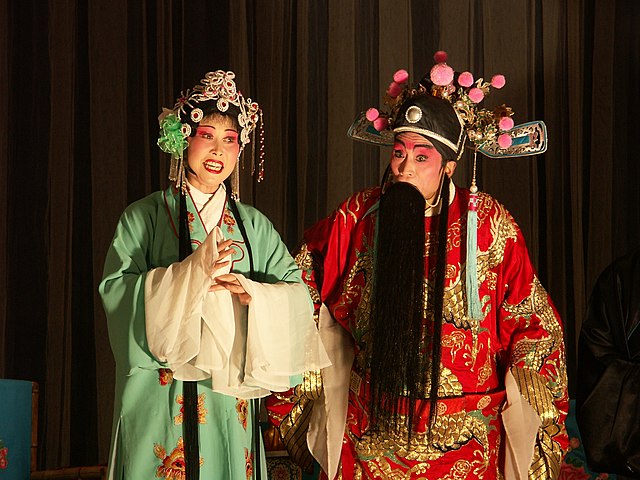Zaju was a form of Chinese opera which provided entertainment through a synthesis of recitations of prose and poetry, dance, singing, and mime, with a certain emphasis on comedy. Although with diverse and earlier roots, zaju has particularly been associated with the time of the Yuan dynasty (1271–1368), and zaju remains important in terms of the historical study of the theater arts as well as Classical Chinese literature and poetry. Zaju is known to have been performed during the earlier Song (960–1279) and Jin (1115–1234) dynasties. The various particulars of the zaju multimedia performance were derived from many and diverse sources of musical, dance, poetry, and theater traditions.
A modern reconstruction of a mural depicting the Yuan zaju stage c. 1324. The original was found in the Guangsheng Temple of Shanxi province.
From a print illustration of zaju plays by Yuan writers; Ming dynasty, Wanli reign (1572–1620).
A Yuan-period opera stage near Niuwang Temple (牛王廟), Yaodu District, Linfen, Shanxi.
Chinese Opera is a form of theatre in China that combines singing, acting, and elaborate costumes. Topics are based on Chinese history, mythology, and literature. Over its historical evolution, it has incorporated various art forms such as music, song and dance, martial arts, acrobatics, costume and make-up art, and literature. It has highly formalized roles, performed by professional actors each trained for specific roles. Exaggerated features and colors make the roles easily identifiable.
A Shao opera performance in Shanghai, China, 2014. This photo shows an acrobatic performer's somersault.
12th century painting by Su Hanchen; a girl waves a peacock feather banner like the one used in Song dynasty dramatical theater to signal an acting leader of troops
Theatre play, Prosperous Suzhou by Xu Yang, 1759
Sichuan opera in Chengdu







